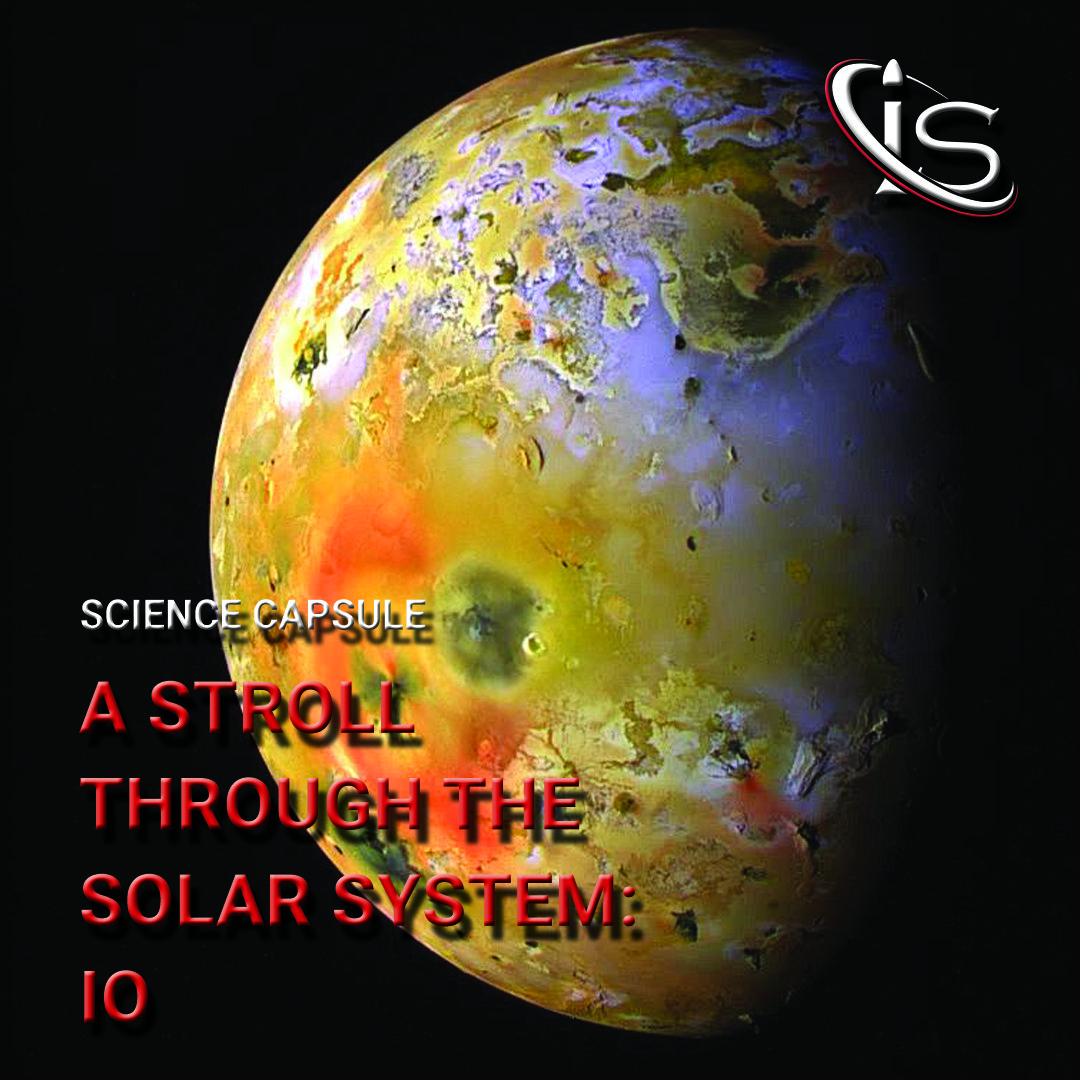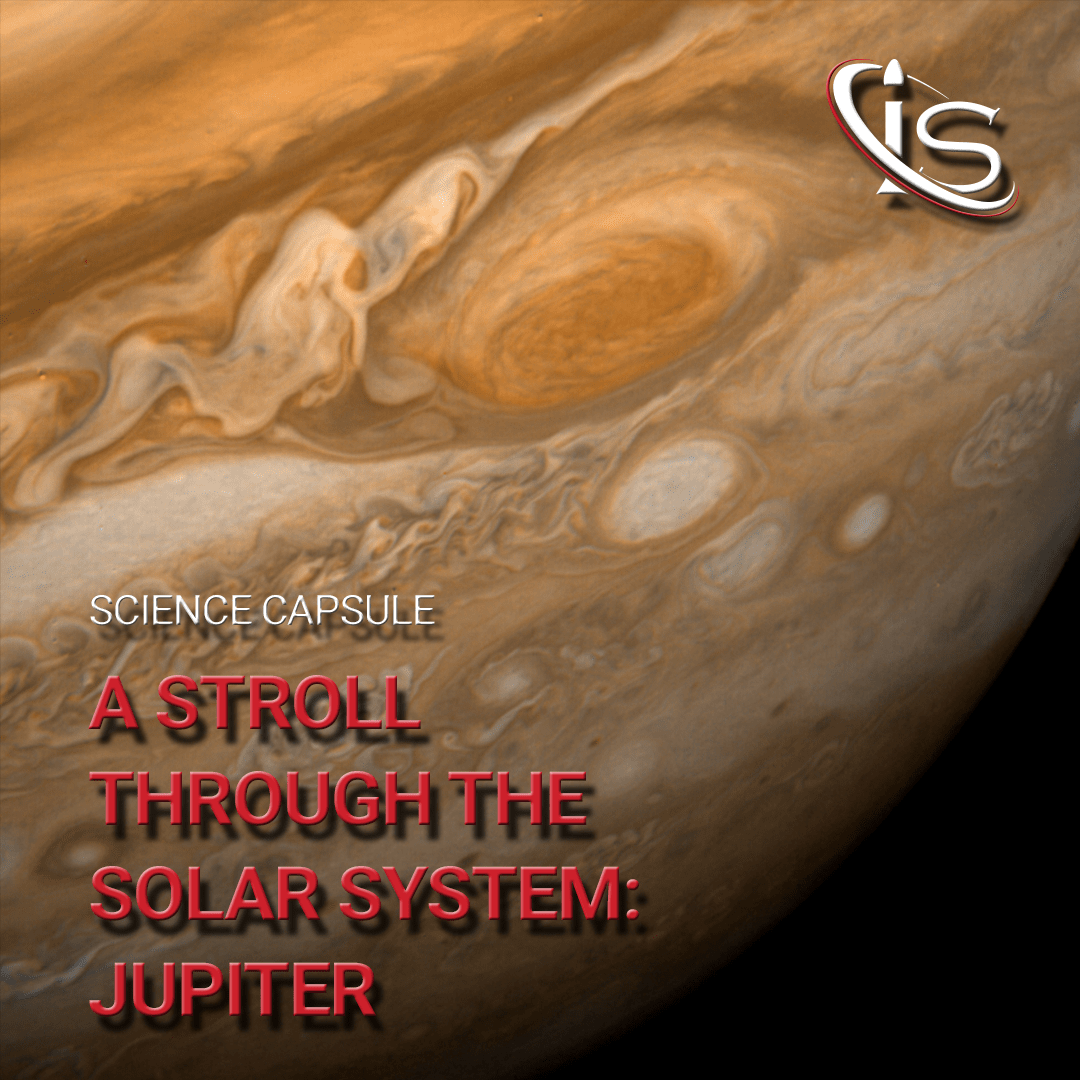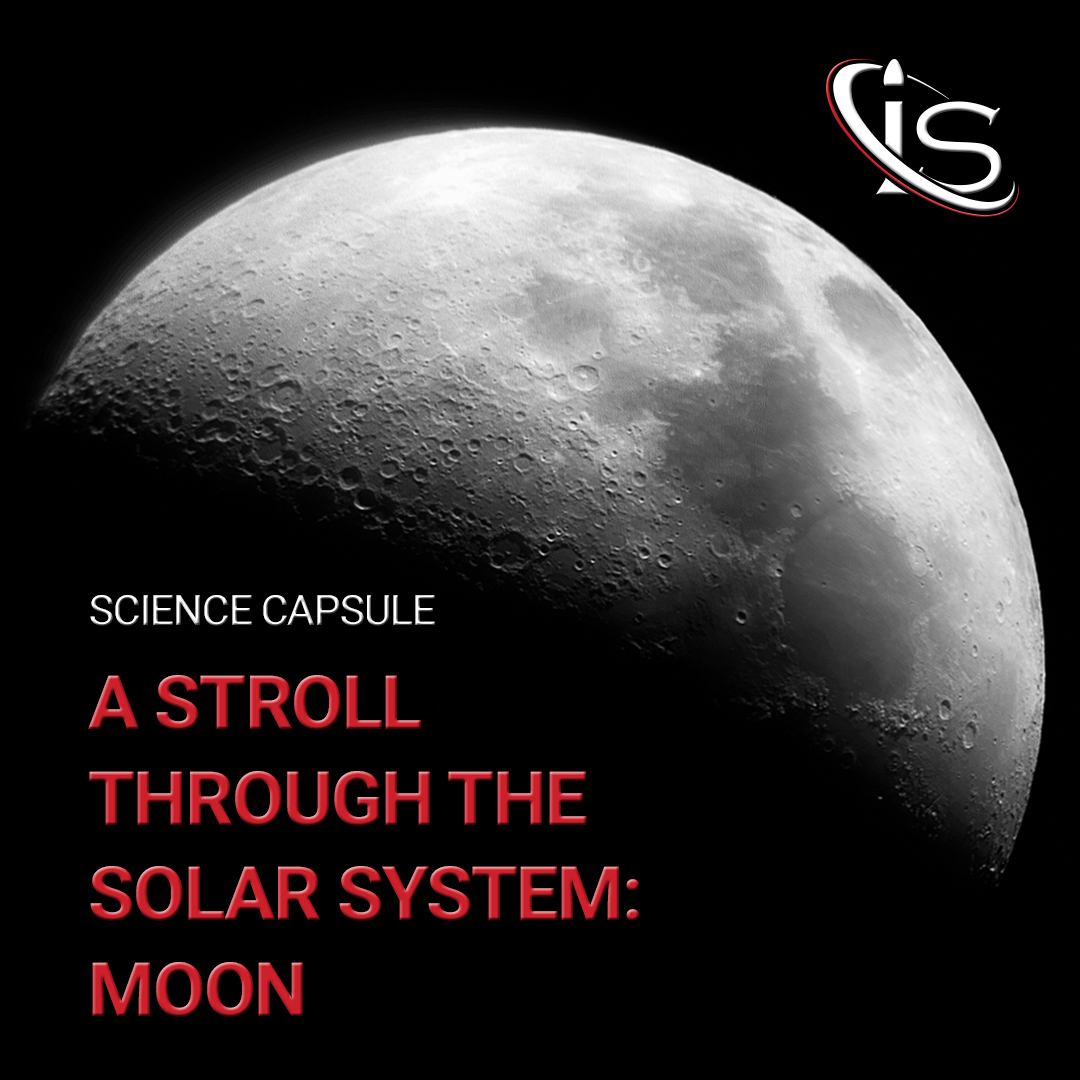Welcome back to another stroll through our celestial neighborhood. After much deliberation, I have decided to go with Jupiter’s moons as today’s — and next week’s — topic. But fret not, we will get to Pluto soon enough. In any case, this will be an interesting capsule, as we will be discussing another planet’s moons for the first time. The way I decided to split the four major moons up was simple: have the first capsule contain Io and the last Europa, as I find those two to be some of the most interesting objects in the whole Solar System. And now, without further ado, it is time to talk about Io, the moon of Jupiter.

A Geologist’s Dream
I want to start the Io section off the right way. That is, by talking about its incredible volcanic activity. If you will indulge me for a moment, and think back to the Venus capsule, you will recall how excited I was to talk about all the volcanoes that riddle the planet. Well, even my favorite planet, has nothing on this moon. Io, the moon of Jupiter, has hundreds of volcanoes, with a concentration reminiscent of Earth’s twin, but they are much more active than those found on the Morning Star. Not only are they constantly erupting, but some of them spew lava fountains — although mountains might be a better word for this — that reach heights of tens of kilometers. Just let that sink in for a moment. Io’s volcanoes can send lava higher than Mount Everest.
What is just as fascinating as the sheer volume of lava that these volcanoes expel, is the reason behind such intense volcanic activity. Io, being in between Jupiter and two of the other Galilean moons, Ganymede and Europa, is the subject of a tug-of-war of sorts. Of course, Jupiter’s gravity is much stronger than its moons; however, these two satellites can combine for perfectly timed gravitational pulls that will be felt throughout Io. And these pulls create effects far beyond the crazy lava columns we just discussed.
Irregular Orbit and Ever-Changing Surface
Given what was already mentioned, it should come as no surprise that Io’s orbit is not perfectly elliptical. In fact, its distance to its planet is always changing. This also causes the effects of Jupiter, Ganymede, and Europa’s pulls to be even more extreme. So much so, that Io’s surface is subjected to constant, extremely powerful tidal forces.
That means that this moon’s surface is forever changing, as these tidal forces generate a lot of heat underneath Io’s crust. This leads to a liquid subsurface with a burning —pun very much intended — desire to burst out from the crust. As a consequence, the pressure here is immense. And this is why Io’s surface is constantly being renewed. Any craters get, immediately, filled with lava, with new liquid rock floodplains spreading out across the moon. Incidentally, scientists are still unsure as to the exact composition of said rock. The two prevailing theories are either sulfur and its various compounds or silicate rocks. However, neither seems to perfectly encapsulate both the colors and temperatures observed.
Rock-Solid Tides Amidst a Sea of Currents
After the last two sections, you would be forgiven for thinking that tides on Io, the moon of Jupiter, could not have any other mind-boggling effects. However, these forces must be Christmas fans, as they just keep on giving. And, after all, it would be quite strange to have tidal forces without, well, tides. But these tides are not the ones we are familiar with here on Earth. Because where we have water being pulled by the Moon’s gravity, Io has its actual solid surface getting stretched every which way by this perennial tug-of-war. Yes, the forces on this moon are so powerful that its actual rocky exterior is affected by them. That is ludicrous. To me, at least.
And it does not end there. The amount by which Io’s crust is stretched reaches up to 100 meters! Compare that to Earth and its water tides being “only” 18 meters, and you will get an inkling of how strong these forces really are.
But what about the second part of this section’s title? What do currents have to do with this? Surely, I am not talking about sea currents, as Io is the only Galilean moon without water. And no that is, indeed, not what I am referring to. Instead, the currents in question are electric ones. Because Io’s distance from Jupiter sits at an average of 422,000 km, it is right in the thick of things when it comes to one of the strongest magnetospheres in the Solar System.
The result is that Io, the moon of Jupiter, turns into an astoundingly large generator, with currents of 3 million amperes and a voltage that can reach 400,000 volts. This also creates an interesting effect on Jupiter, as the current will take the path of least resistance — as always — and generate lightning in the planet’s upper atmosphere.
I Have a Magnetosphere Too
No, the title above does not have a typo. Quite the opposite, in fact. You see, the word Io has some very interesting mythological origins — which we will explore momentarily. But it also has an alternate meaning. Any fellow Italians in the crowd already know what that meaning is, as Io also means I in Italian. And when you realize that we all also have a (very small) magnetic field… let’s just say that the title speaks for itself. Yes, that was a reference to the Hans Niemann chess debacle.
Getting back to Io, the moon of Jupiter, and it is theorized that it possesses an iron core. Therefore, as this celestial body begins to spin, a magnetic field would be produced in tandem. However, this is not the most interesting magnetosphere-related point when it comes to Io. In fact, Jupiter’s magnetosphere and its effects on this moon are what really make the whole situation unique. Due to the strength of Jupiter’s magnetic field, Io gets literal thousands (or 1000 to be exact) kilos of material ripped off from it every second. That is just insane.
The material, then, gets ionized, forming a doughnut shaped, radiation cloud, also known as a plasma torus. Plasma because of its composition and torus because of its shape. Furthermore, these ions can also be pulled into Jupiter’s atmosphere along the magnetic field lines. This causes some of the crazy Jupiter aurorae that we discussed in Jupiter’s own capsule. And as if all this were not enough, these ions are also the reason Jupiter’s magnetosphere is much larger than expected.
Galileo GalileIo
I will admit that this section’s title is a bit forced. However, what else could I have named it when the name of this moon’s discoverer lends itself so perfectly to this wordplay? Something normal? Of course not.
Regardless, way back on January 8th, 1610, the great Galileo was the first to uncover moons orbiting a planet other than our own. Those moons were, of course, the four Galilean moons: Io, Ganymede, Europa, and Callisto. This discovery would also greatly contribute to moving away from the outdated geocentric model of the Universe to the current (and much more accurate) heliocentric one. A little fun fact about this momentous occasion, Galileo had originally discovered these moons the previous day, but had not been able to tell Io and Europa apart.
A Bizarre Naming Journey
These moons all had quite the interesting path to reach their current names. Originally, Galileo had dubbed these the Medicean moons, in honor of the most powerful family in Renaissance Florence. A family whose greatest accomplishment is most certainly commissioning Michelangelo’s David. And I am only half joking here, as that is the best sculpture ever made, bar none. Anyway, Galileo also gave each moon a unique and beautiful name: I, II, III, and IV. With Jupiter having 80 moons, it is a mystery why scientists decided to rename them after mythological figures. And speaking of…
Jupiter’s Entourage, Part I
The most beloved section (at least by me) of these strolls is back again. And with quite the unique mythological story. After all, how many times had Zeus/Jupiter been unfaithful to his wife, Hera/Juno, thus leading to some vengeful repercussions from the latter? Hundreds? Probably more, honestly. In any case, this is one such instance.
The story is as common and cliché as possible, when it comes to Greco-Roman mythology. Random woman is the daughter of a Greek man and his nymph wife/sister. Said woman is seen by Zeus. Zeus decides to have an affair with her. Hera finds out and turns her into a cow. Okay, so that last part may not be as mundane, but the rest? Textbook Greco-Roman mythology.
There is also another mythological figure that goes by the name Io, but that one is the descendant of Phoroneus, a primordial king of Argos. Ironically, Io is also believed to be the sister of that same king in the other mythological versions, so it really is a pick your poison, I mean favorite iteration, type of thing.
As for when the moon got this name, instead of the very creative I, it was fairly soon after its discovery. All the way back in 1614, to be exact. And it was not Galileo who redubbed it. Instead, it was an astronomer by the name Simon Marius.
Life on Io, the Moon of Jupiter
To end this capsule, I will very briefly mention Io’s potential for life. It has none.
As always, I hope you have enjoyed learning more about what is beyond our planet. These strolls will now be a monthly recurrence, as we have finished discussing the planets, and the rest can be used as a fun special capsule to accompany other topics. If you would like to keep up with all the science capsules as they come out, you need only check back here, at impulso.space, every Wednesday. And if you need to pass the time until then, I recommend checking out our other science and technical capsules.





